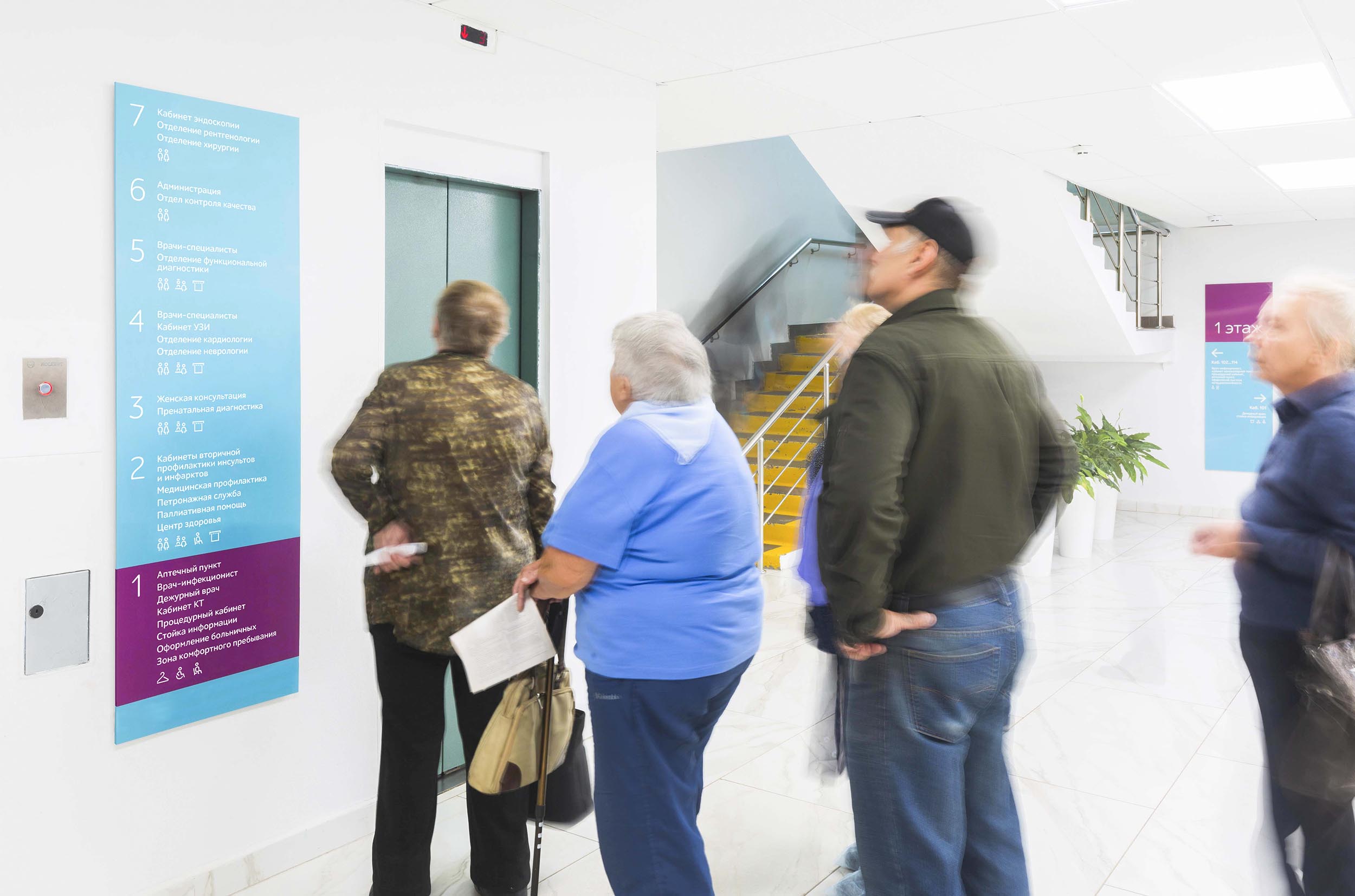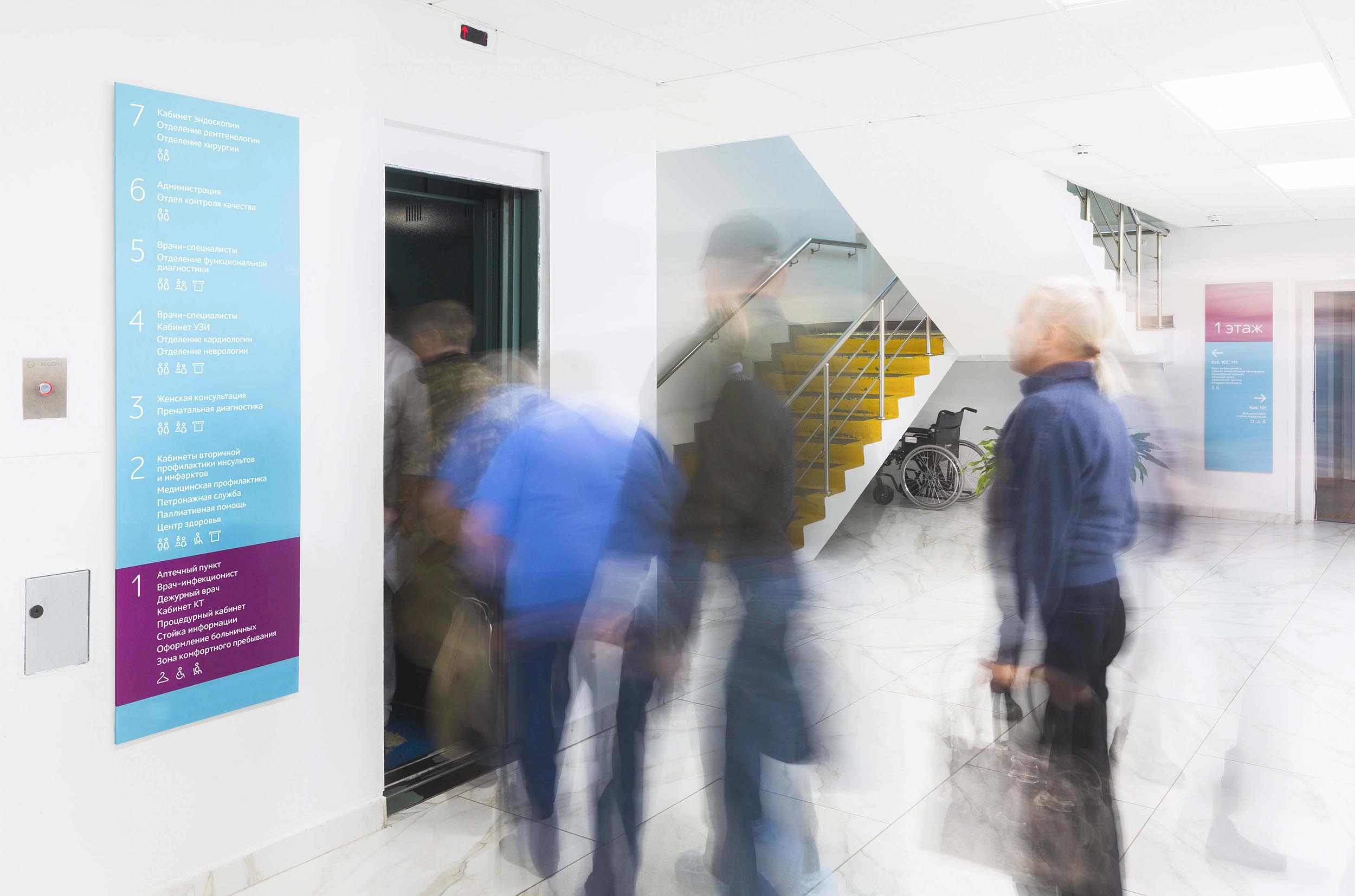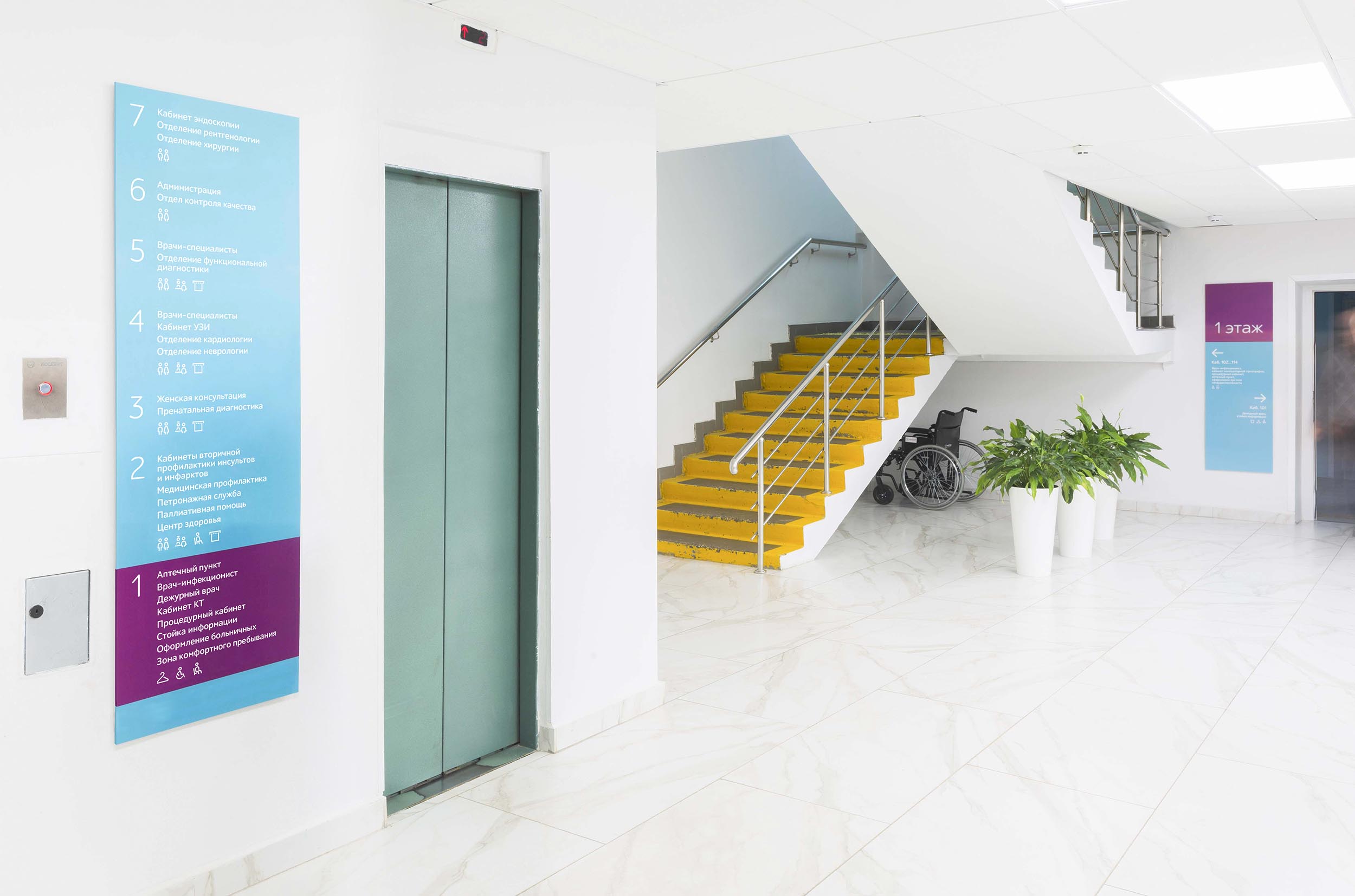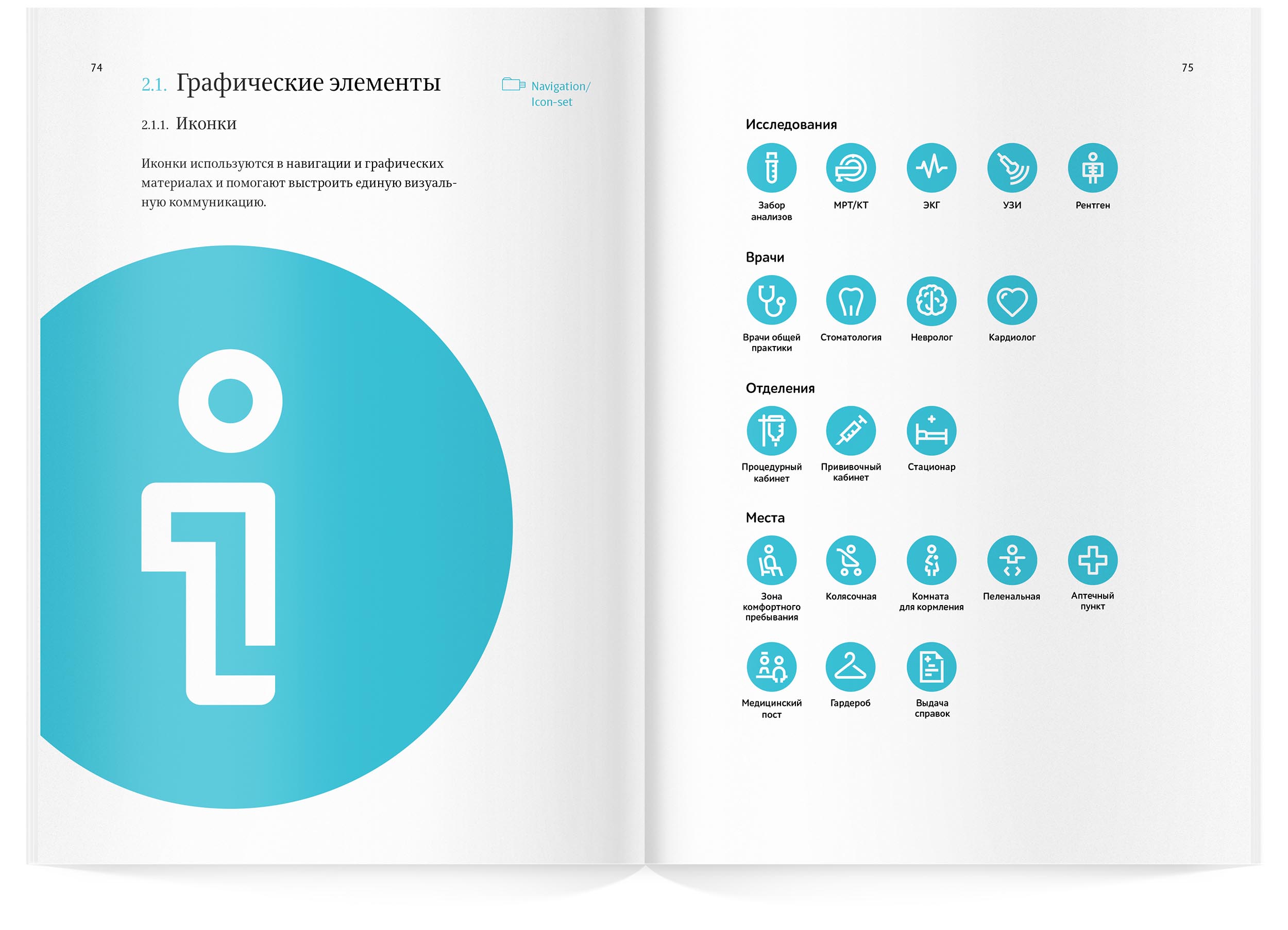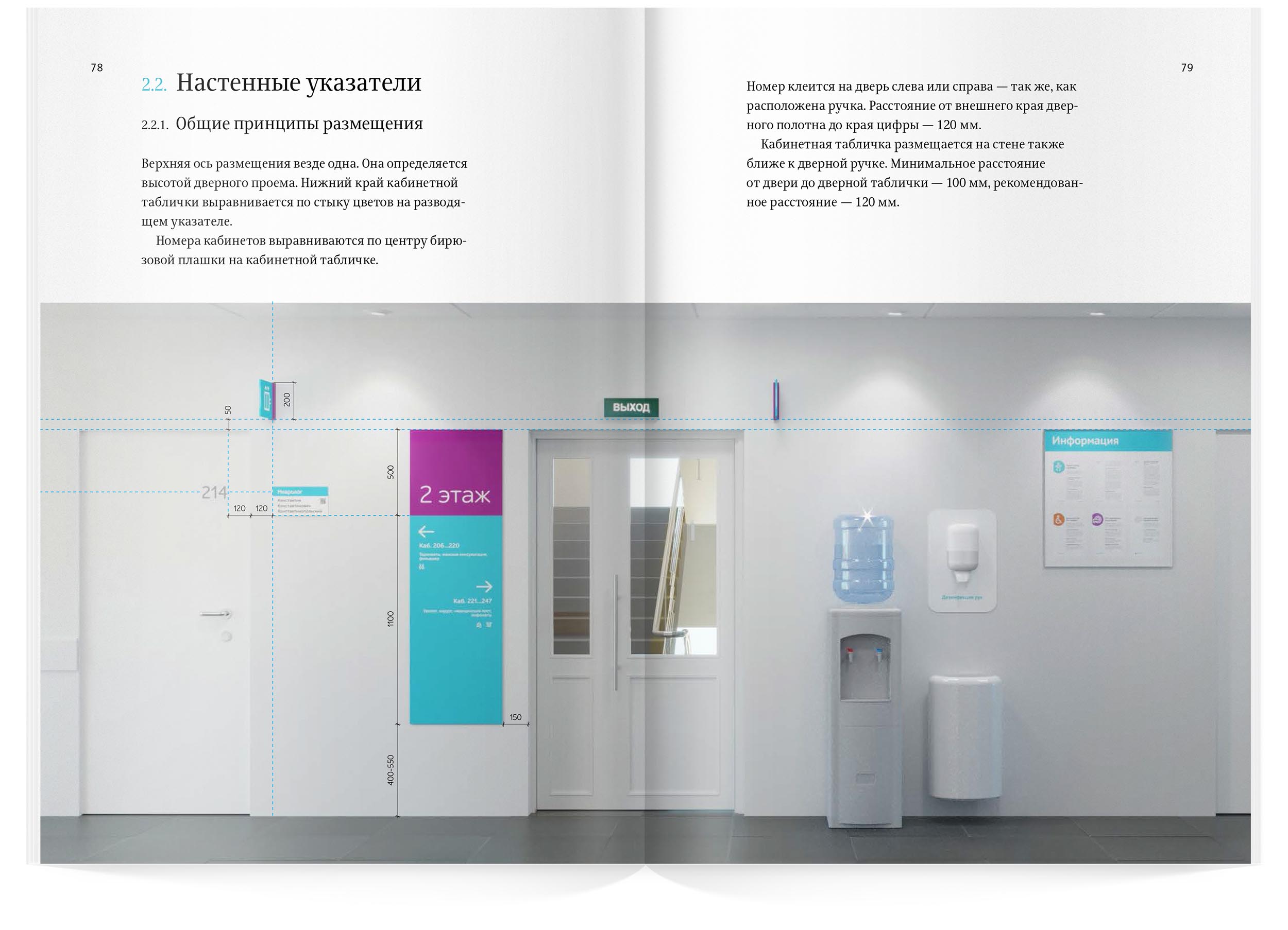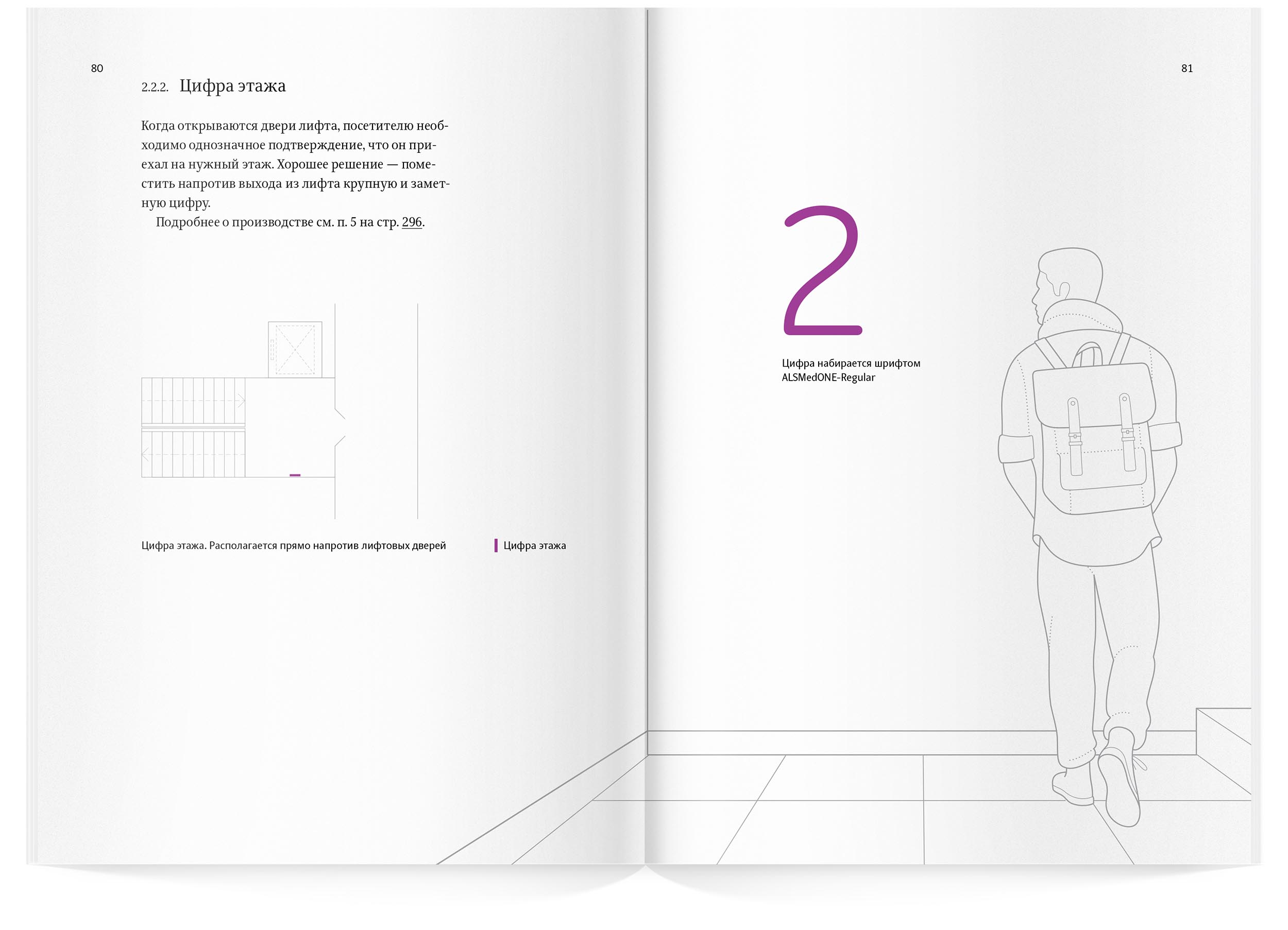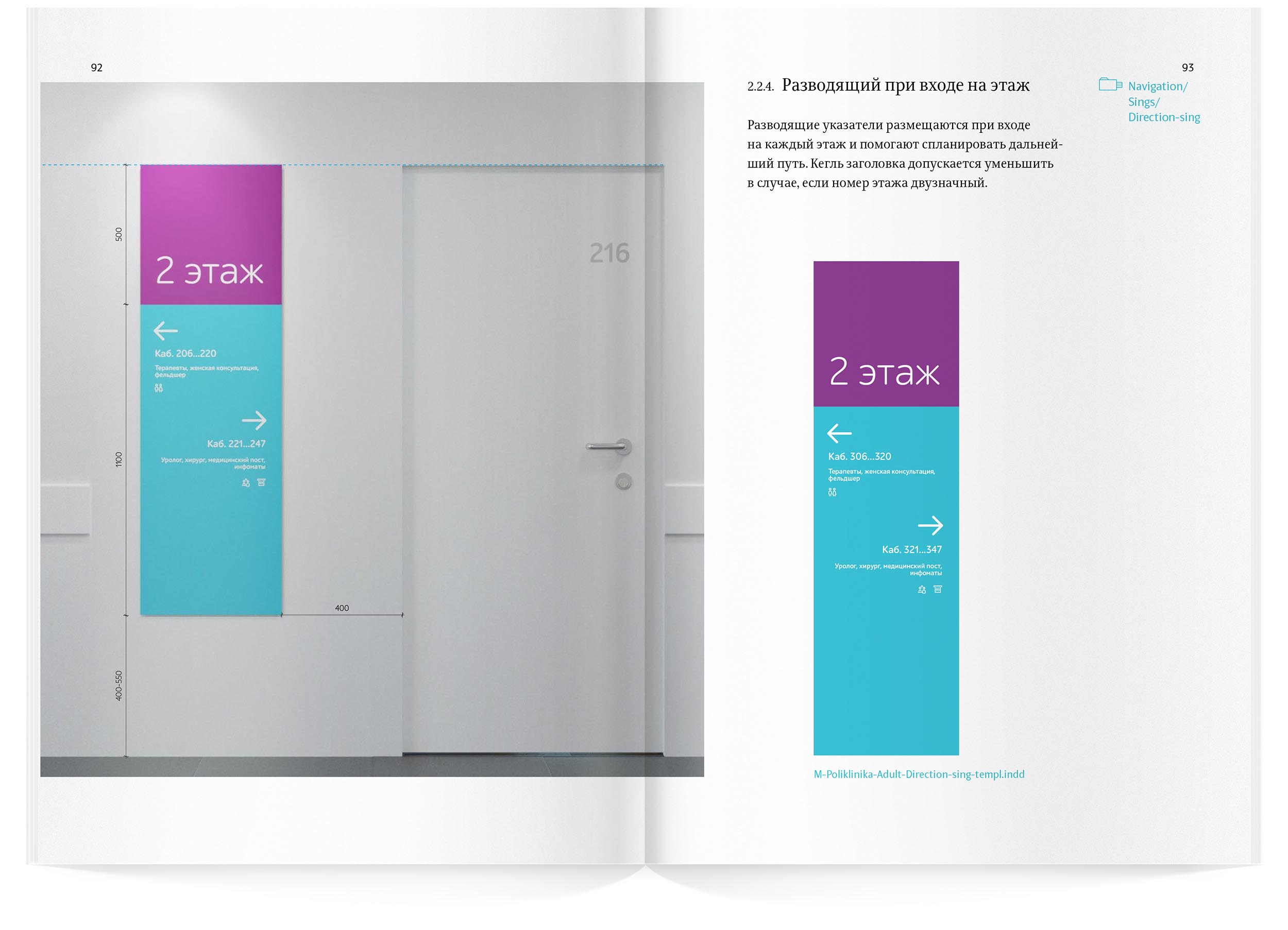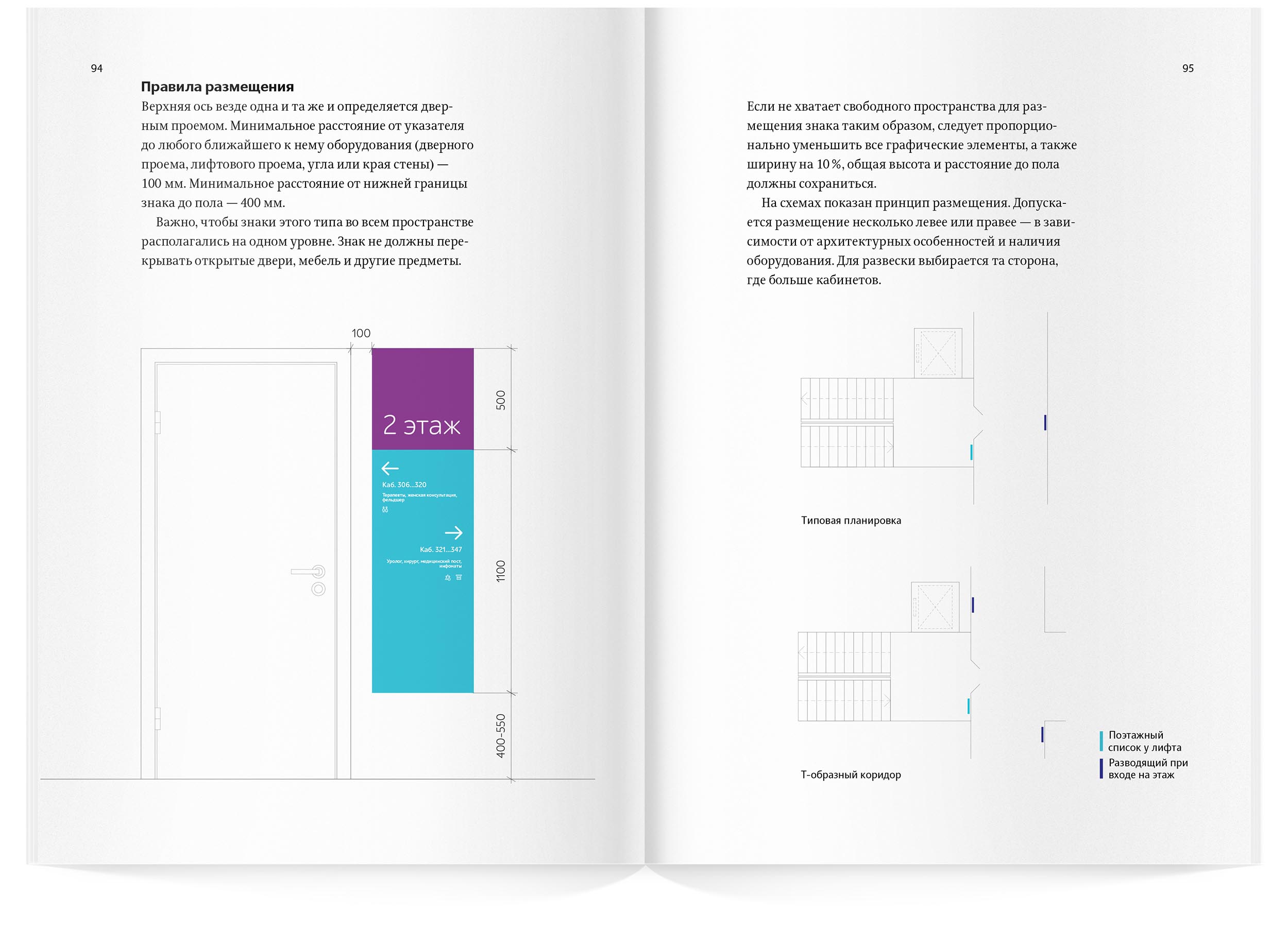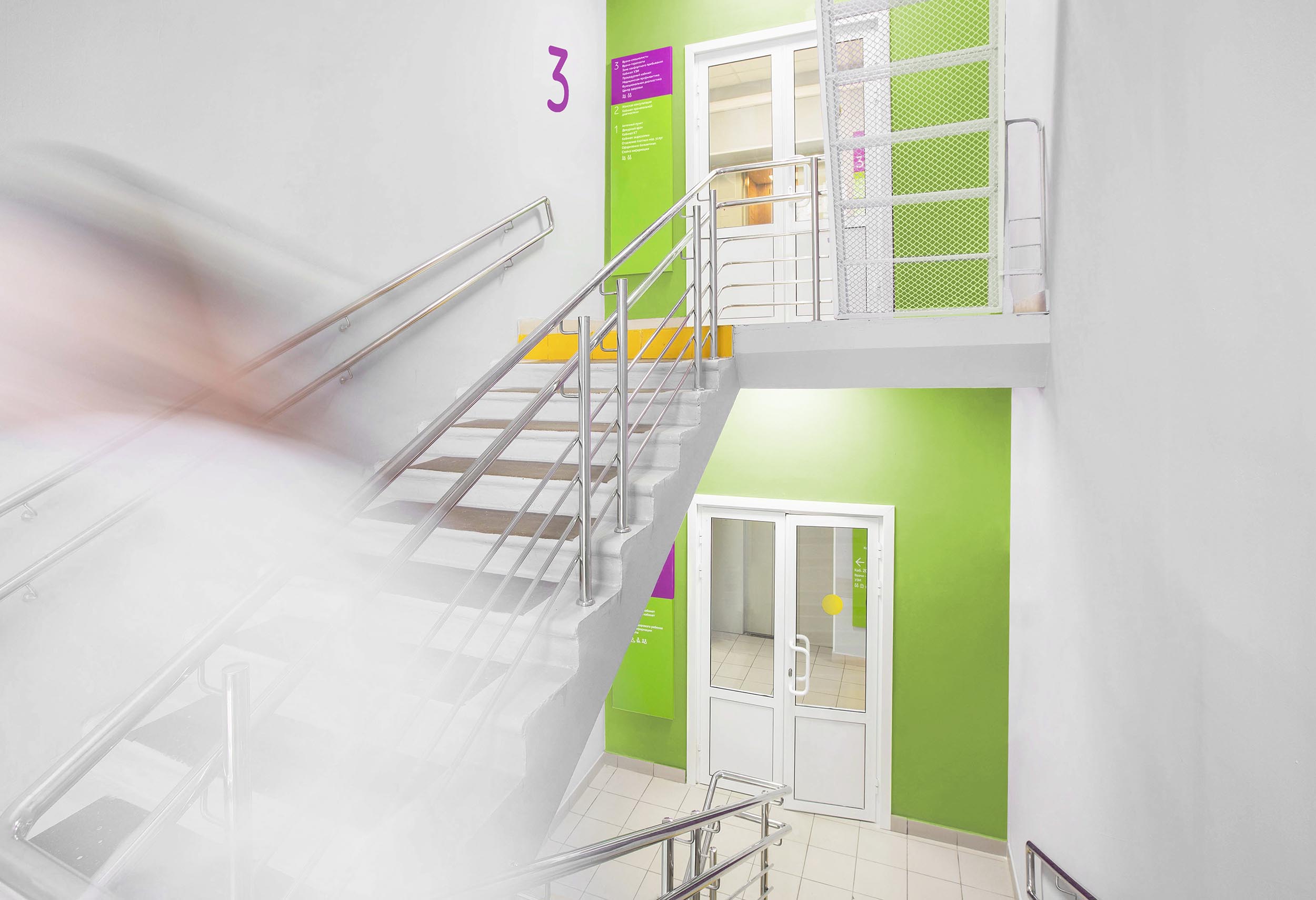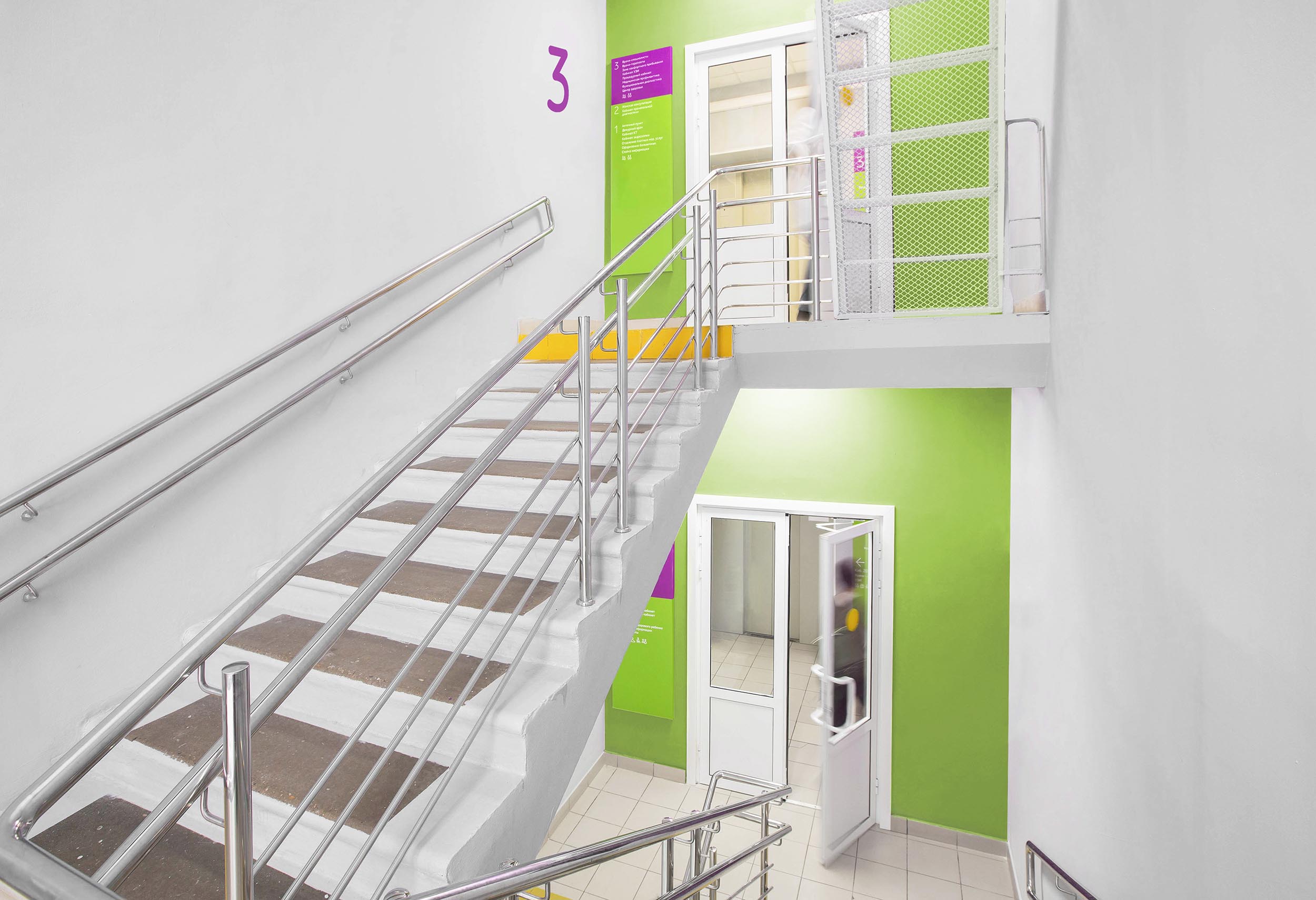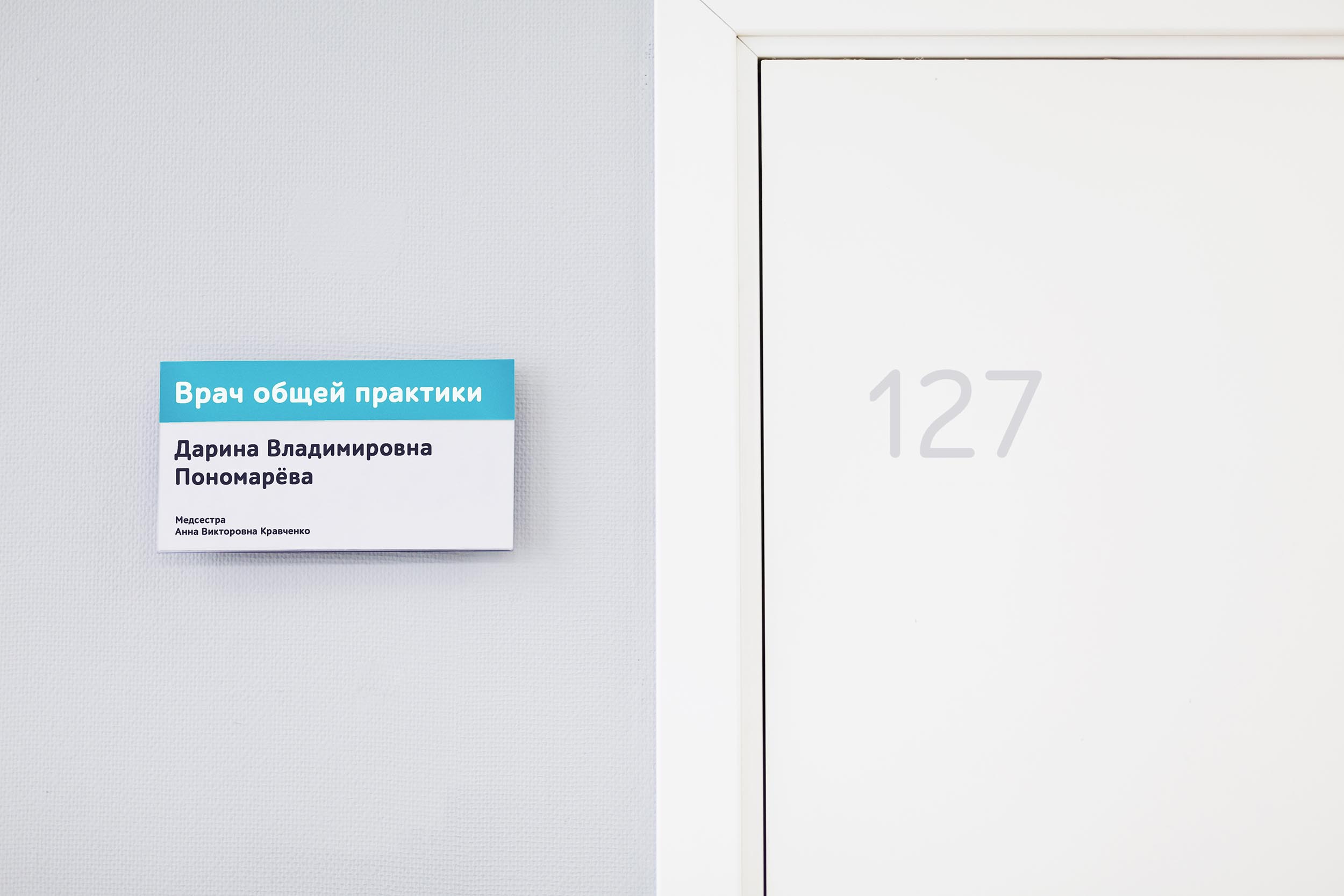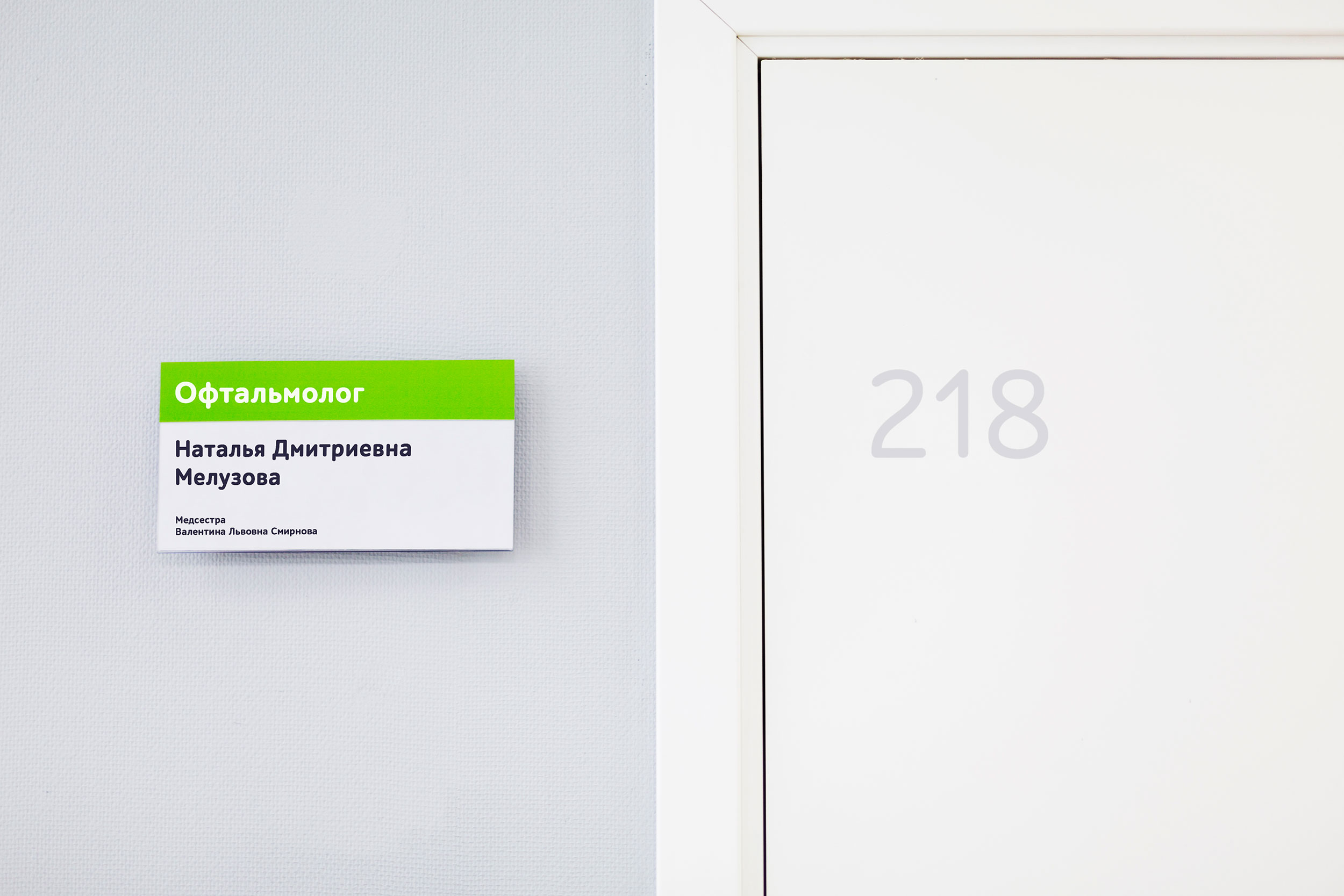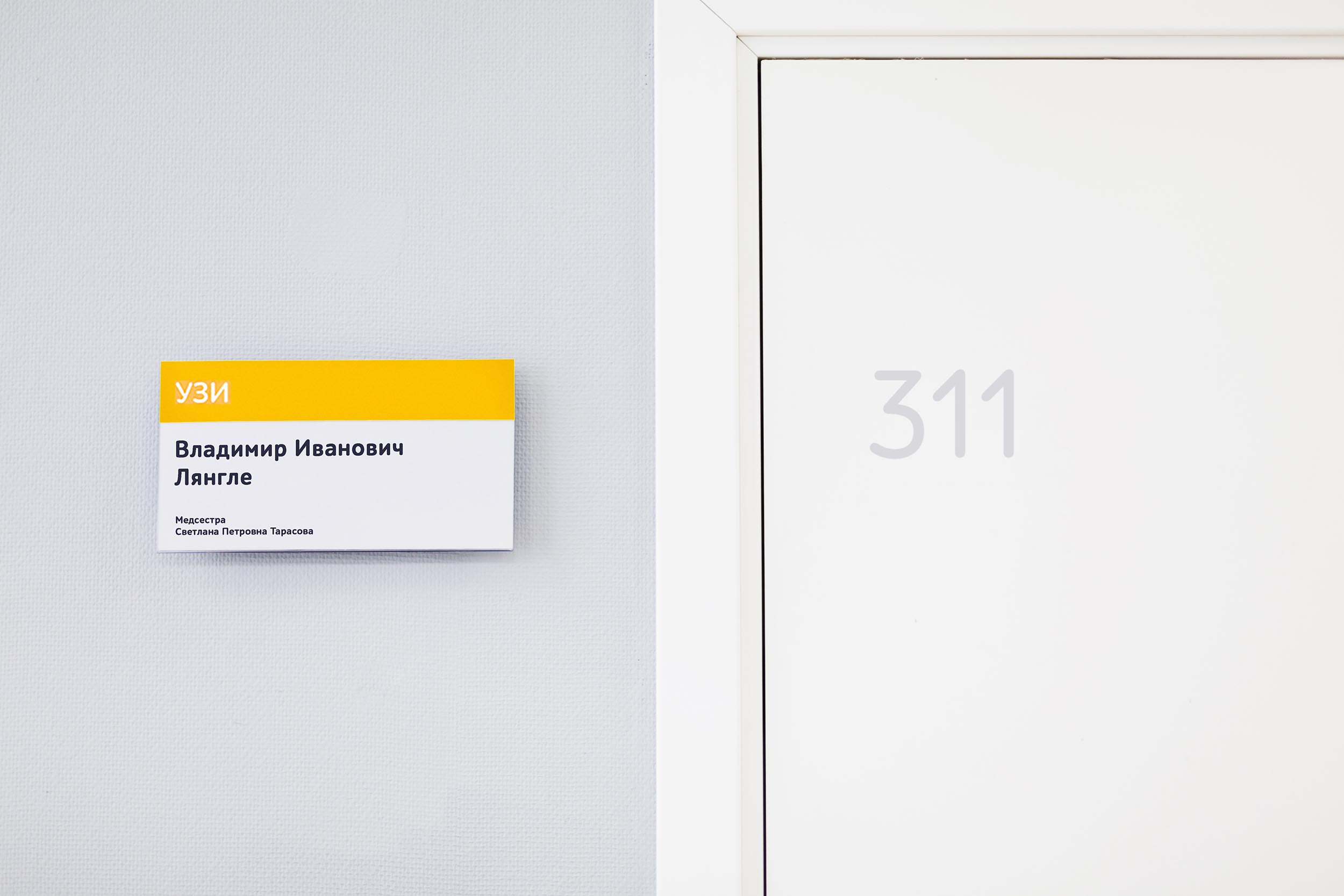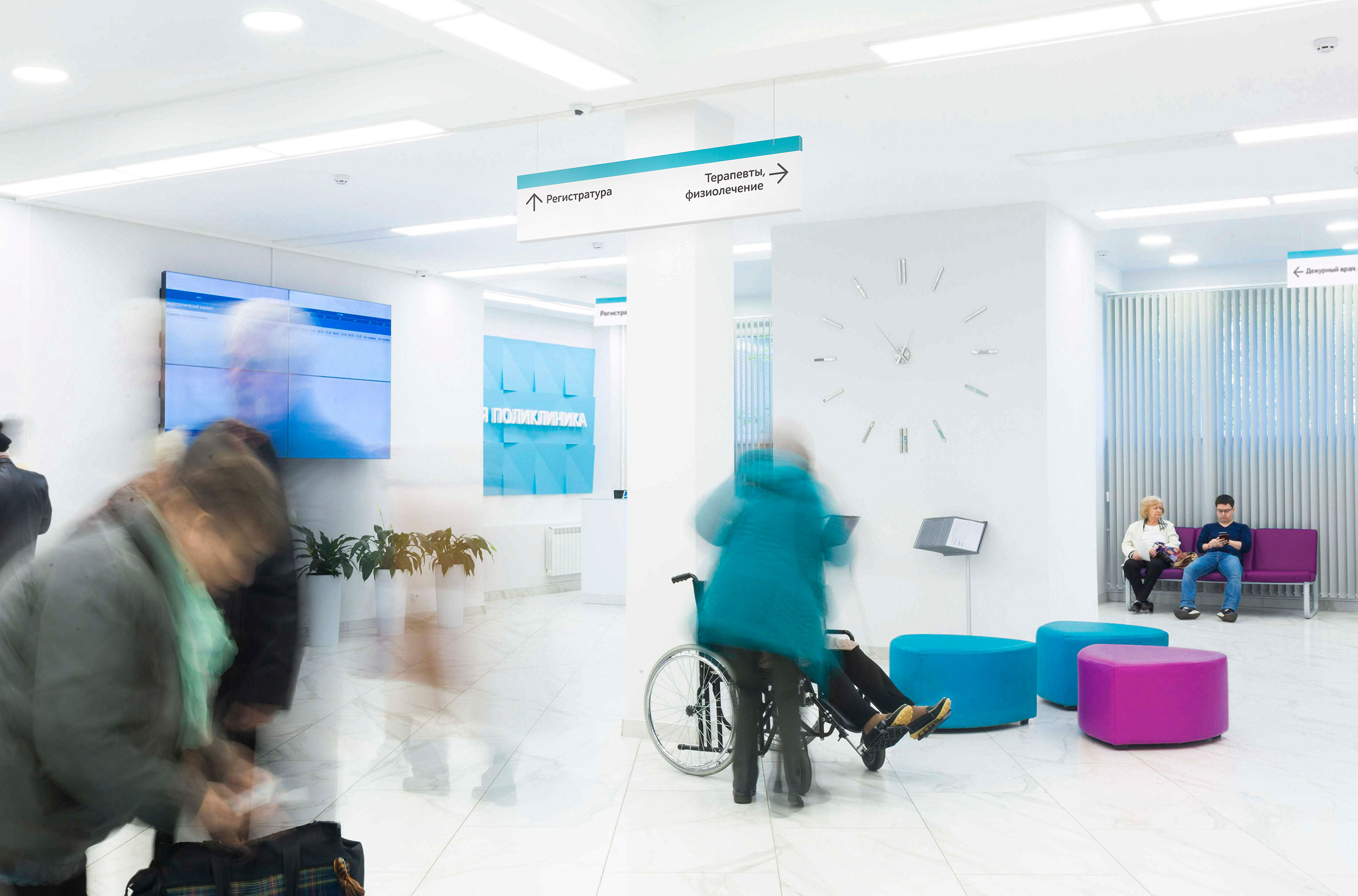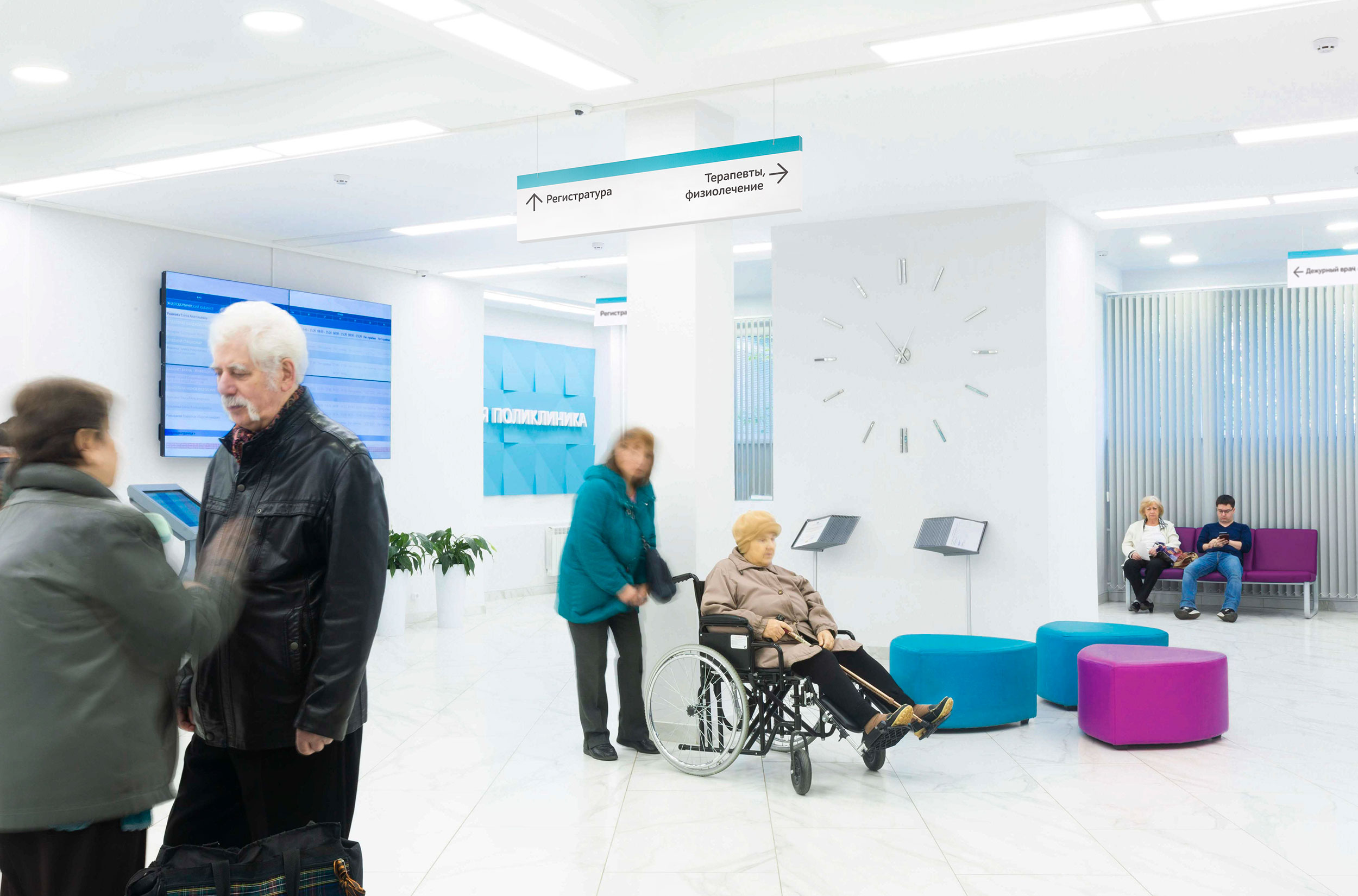Not everyone is excited by the prospect of communicating with other people. And if it just happens that you’re also sick (which is often the case when visiting a polyclinic), you probably don’t want to talk to anyone at all, you just want to be seen by a doctor as soon as possible. Which is why everything in polyclinics is now completely obvious.
Information stand
The visitors are greeted in the main hall on the ground floor by an information stand that has all important information that used to be scattered over many places in the building.

The stand has the official name of the branch and its address, names of all the important staff, their phone numbers and schedules.
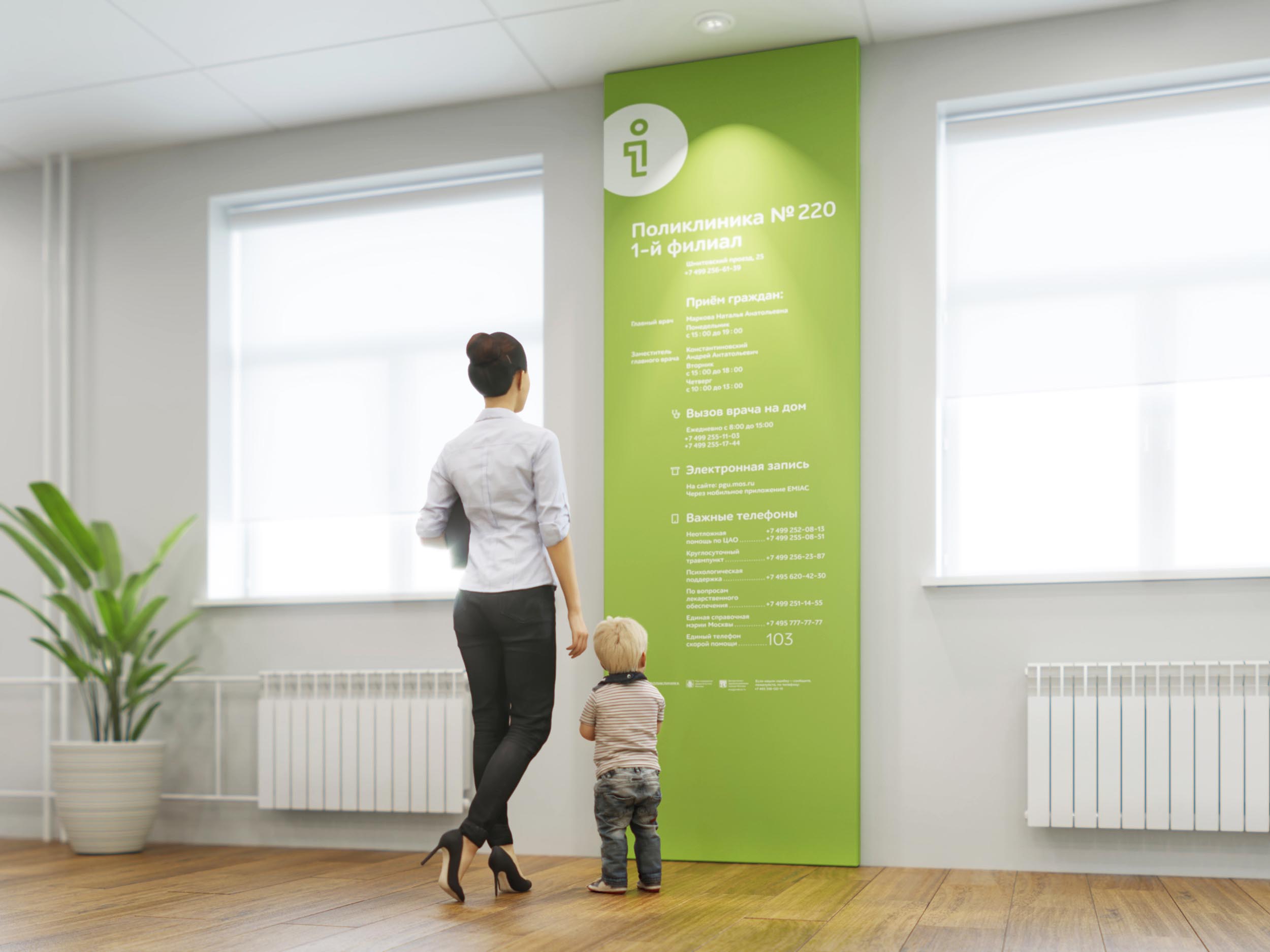
Signs in elevator halls and stairwells
Those who want to stretch by taking the stairs can make use of bracket panels with recognizable symbols that make it immediately clear where to go. The exit to the stairs on each floor is marked by a large floor number.
It is also the location of a floor sign which explains what is located on each floor.






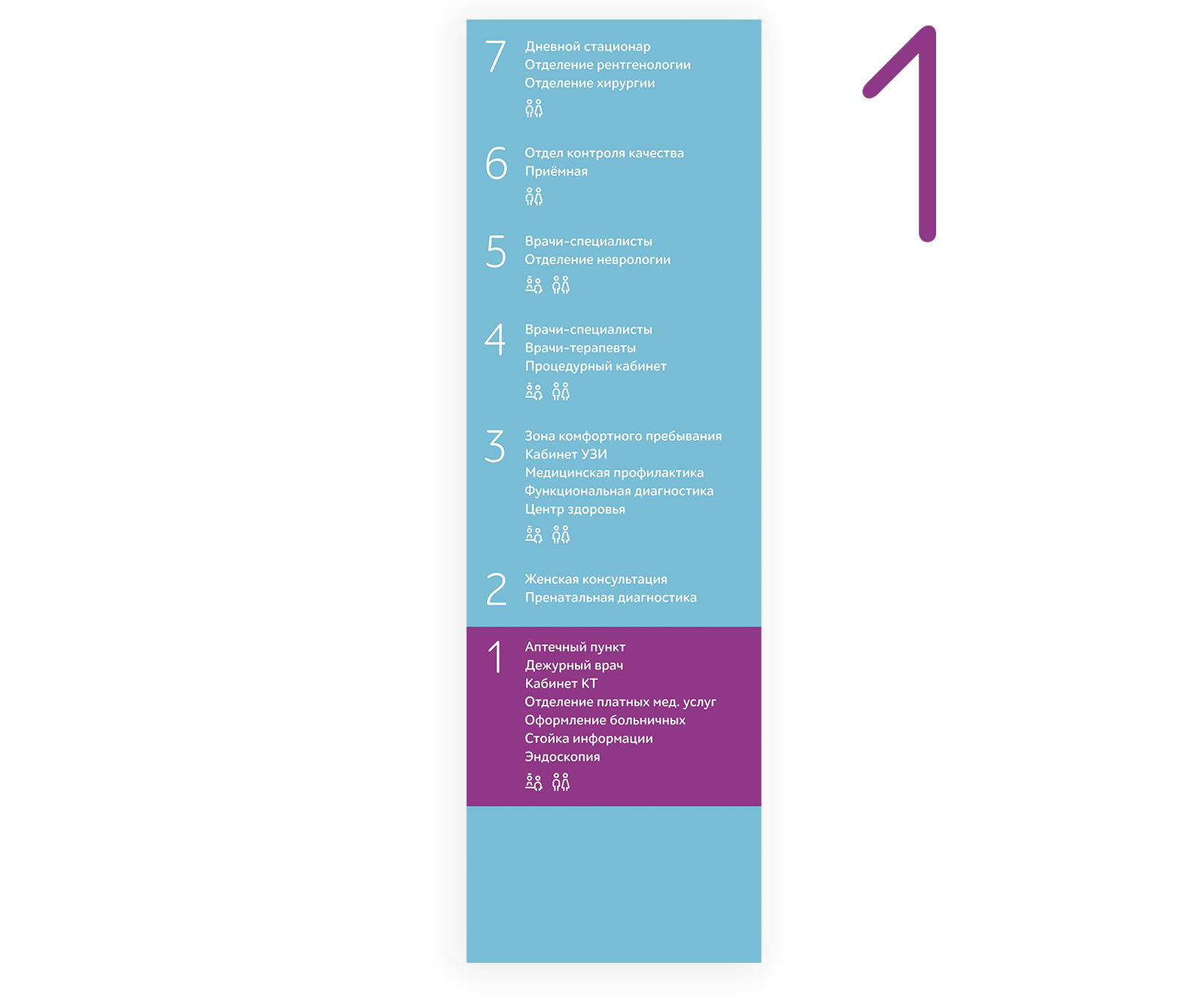
Floor numbers and floor signs also greet visitors when they exit the elevator. The large number tells them that they have arrived at the right floor and the sign confirms that they are where they need to be.
In corridors the signs have arrows: these doctors are to the left and those are to the right.
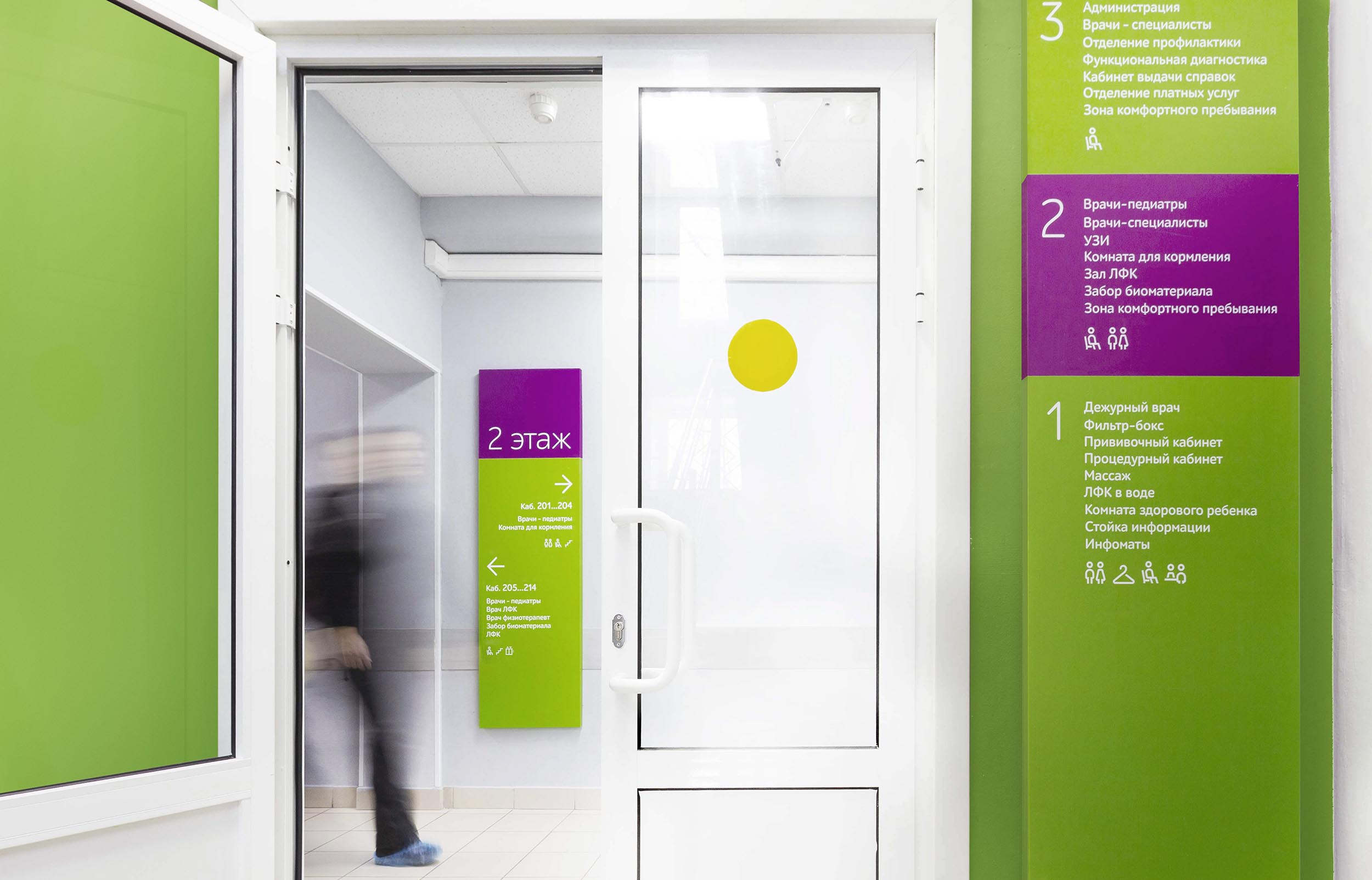
Signs in corridors
Large conspicuous signs are hung perpendicularly in corridors: the medical practice department is straight, the health center is to the right. Wall bracket panels provide more details and show the way to specific objects: offices, procedure rooms, elevators or washrooms.
Wayfinding signs are unobtrusively duplicated on the floor: light-colored stickers with ranges of room numbers and arrows are put on the tiles.
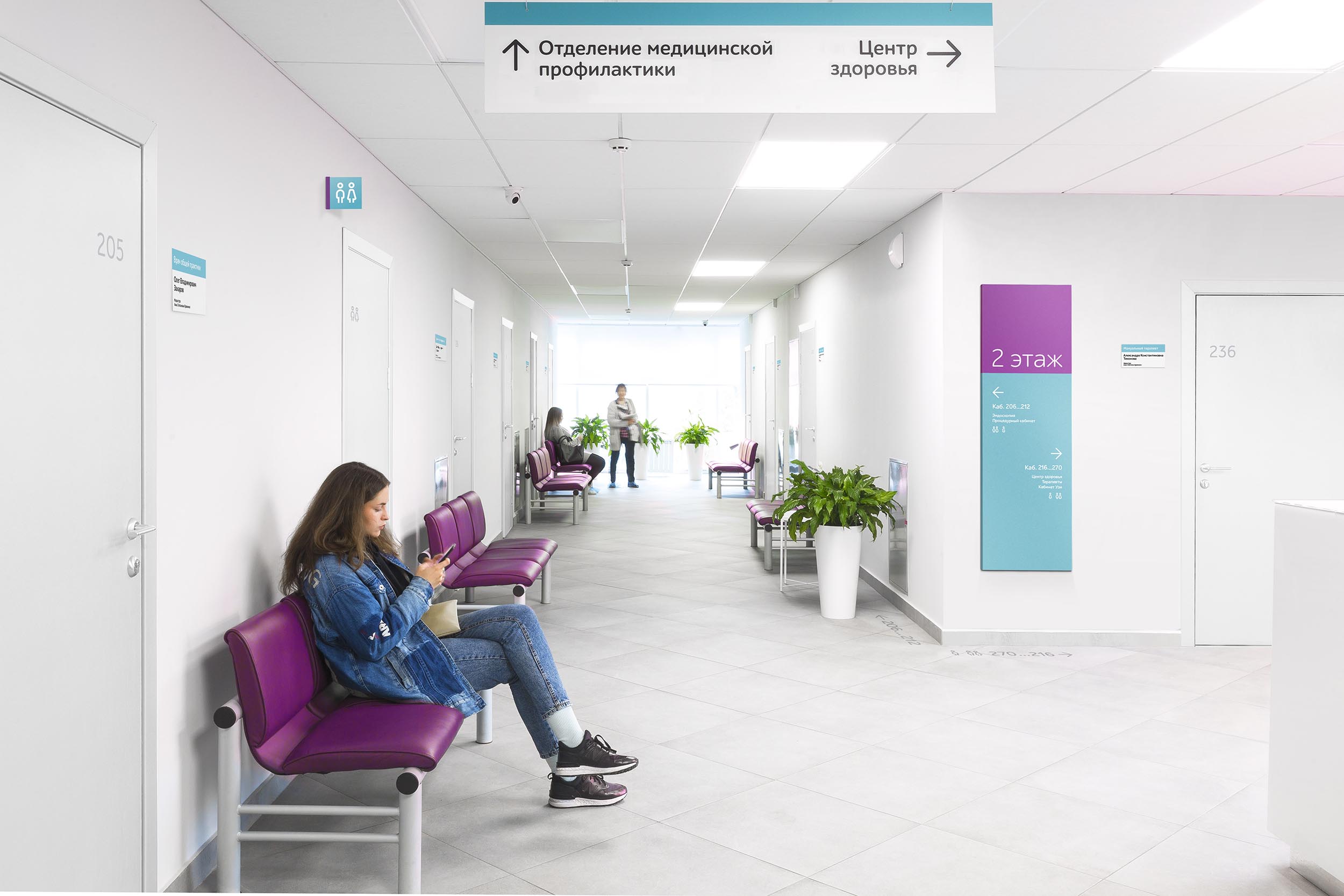
In corridors, the signs are hung perpendicularly and show the directions to the most important doctors and rooms that are hard to find.
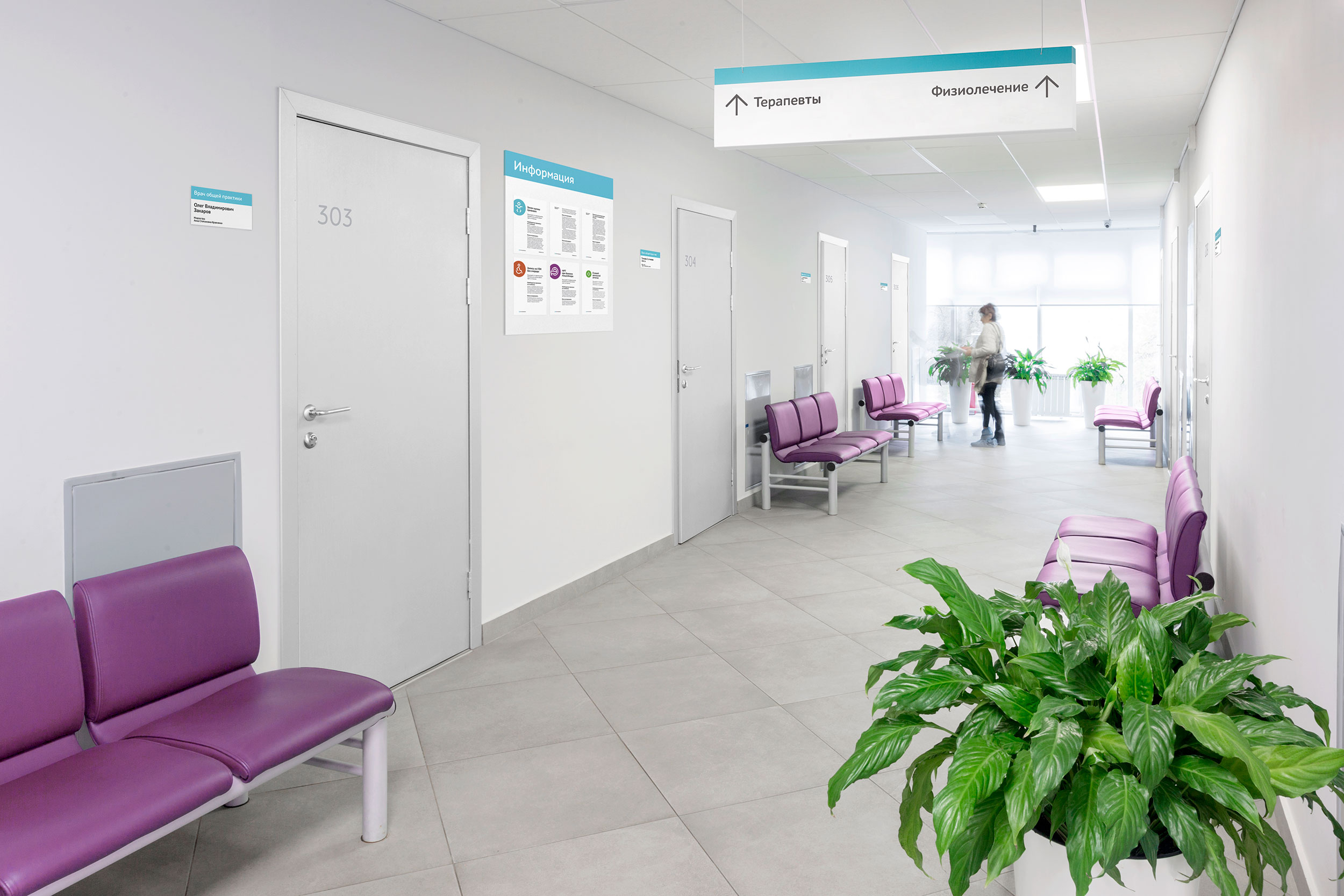
Room number plates
Next to each room is a plate with the doctor’s name and specialization. The light-gray numbers fit well into the interior while remaining readable.
The door plates are color coded: doctors’ offices are marked with a turquoise stripe (salad green in children’s polyclinics), examination rooms (ultrasound, ECG) with a mustard-colored one and so on.
Room numbers are typed with the friendly Shlange typeface in gray or light-gray color. This allows the numbers to remain visible without attracting too much attention in corridors.
Schedule and information stand headings have a turquoise background in adult polyclinics and salad green in children’s. Windows where doctor’s notes are issued are also marked with turquoise or salad green signs.
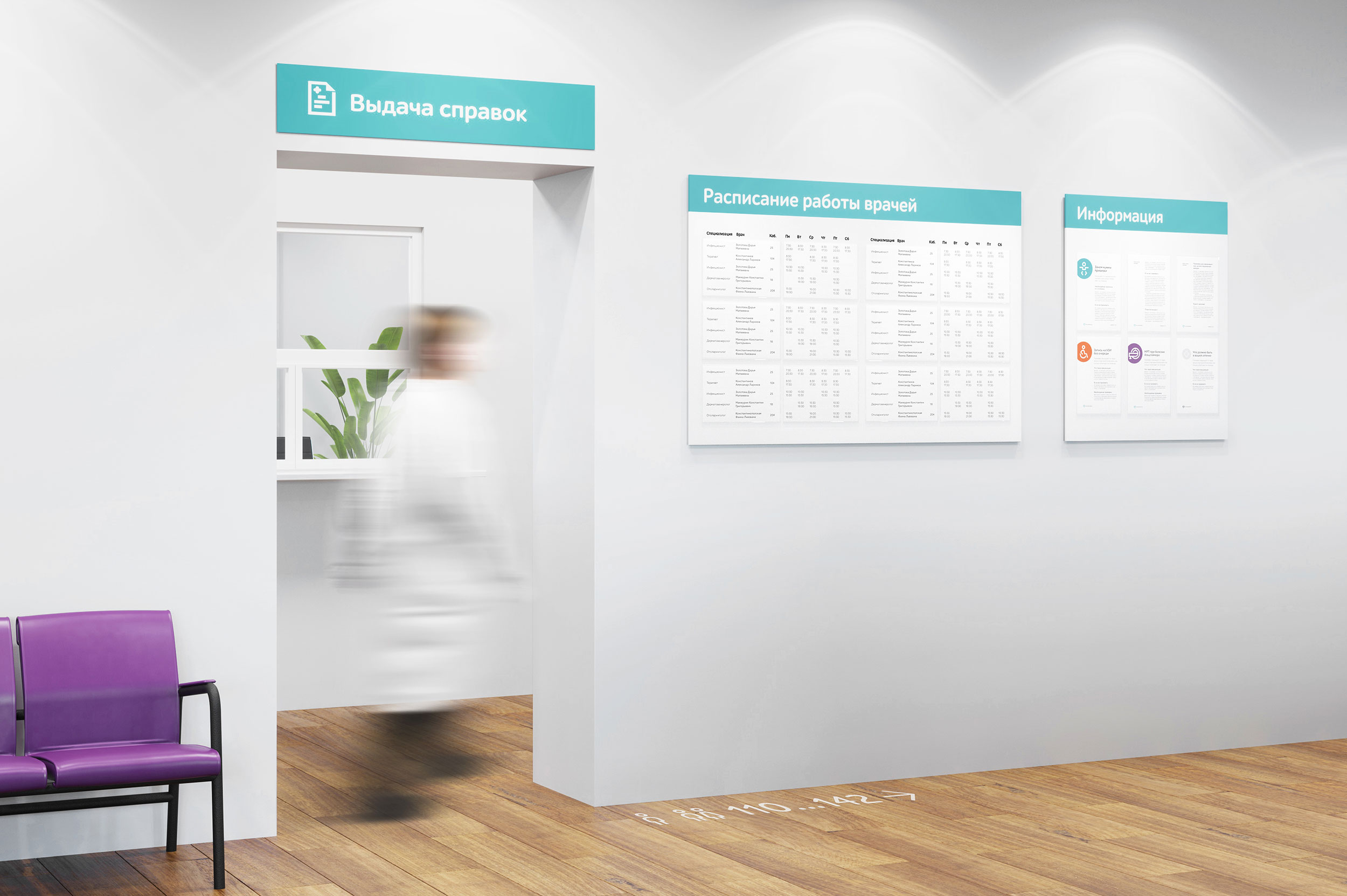
Adults and children—in their own polyclinics—can easily find the doctors they need, carefully listen to their instructions, take the prescribed medicine sat home and of course get better very fast.
designers
illustrators
typesetters
architects
photographer
editor
proofreader
- The studio wishes to thank the team of the Moscow Department of Health and personally Marina Davydova for their assistance with the project
